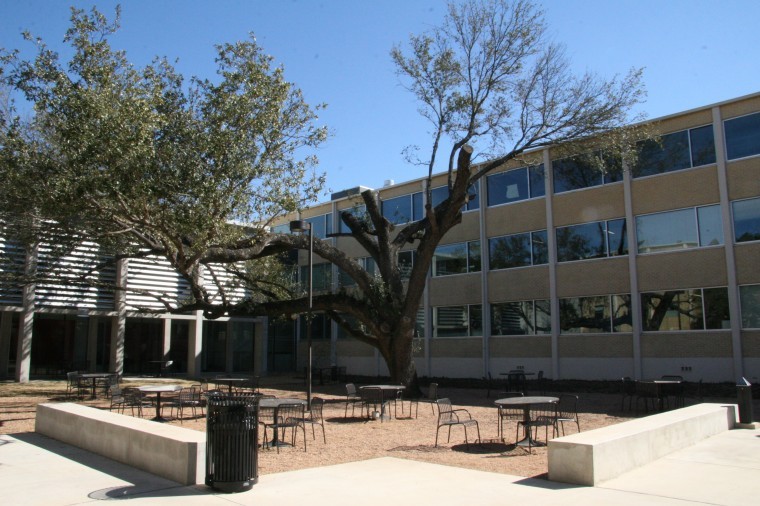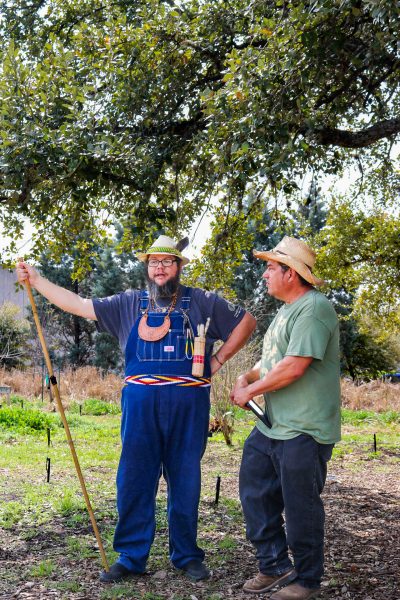Doyle courtyard live oak suffering from undetermined illness
If you have visited the Doyle Courtyard recently, you may have noticed the tree in the center of the courtyard has a few fewer limbs than it did a year ago.
The live oak tree’s health is declining, and the cause is undetermined.
Campus arborist Tom Dunlap first noticed changes in the tree’s appearance last May.
“My procedures are to go out and look for damages,” Dunlap said. “I came out and looked at the tree and thought boy, you know, it doesn’t look quite right.”
A lifelong tree enthusiast, Dunlap saw that the leaves on the branches closest to the offices in Doyle Hall looked yellow when they should normally be a glossy dark green. That section of the tree was cut down as a part of the treatment plan Dunlap developed after consulting other Physical Plant employees and fellow arborists to try and restore the tree’s health.
Though some branches were cut down to help the tree conserve nutrients, Dunlap said he intends to try to restore the tree through other methods as well.
“The last thing I want to do is cut a tree down,” Dunlap said. “I would much rather be a surgeon than a mortician.”
The treatment plan involves several procedures to combat all of the factors that may have caused the tree’s health decline, including oak wilt, waterlogged soil or soil compactness.
Oak wilt, an infectious disease caused by a fungus, is perhaps the most difficult to treat and the most difficult to diagnose. The tree displayed some symptoms of oak wilt, including veinal necrosis—when the veins in the leaves turn brown prematurely. Oak wilt is a common problem throughout central Texas.
“We don’t know for sure if it has oak wilt,” Dunlap said. “Everyone that has looked at it said it might.”
Oak wilt is almost always spread from an infected tree to a healthy tree underground through connected roots in a process known as a root graft. This is possible because oak tree roots spread considerably underground and can bind or graft to trees of the same species, forming an extensive underground root system. However, the trees surrounding the sick oak are healthy, which indicates that the oak may not have oak wilt.
But Dunlap also said the fungus usually spreads in concentric rings from the tree trunk out, and he observed symptoms in separate, more distinct sections of the tree. The tree has not been tested for oak wilt and probably will not be because testing is difficult and expensive, Dunlap said.
Although the tree may not be infected with oak wilt, the soil and the tree were treated with fungicide to try to isolate the fungus as a precaution. The tree will be treated with fungicide again in two years.
Dunlap also observed that the soil around the base of the tree was too wet. He believes the landscape fabric beneath the top layer of gravel, laid down to prevent weeds from growing, also trapped excess water. Too much water can injure the tree because its roots cannot take in adequate oxygen from waterlogged soil.
In response, Dunlap and others cut large holes in the landscape fabric and used an auger to drill holes beneath the holes in the landscape fabric. The holes were then filled in with coarse gravel, which Dunlap described as “breather tubes” to help aerate the soil.
Throughout treatment, the tree has continued to grow in some areas. There are some small sprouts on the main branch of the tree, which can be a positive sign because sprouting stimulates growth.
“My vision is that the tree will restore itself,” Dunlap said.











